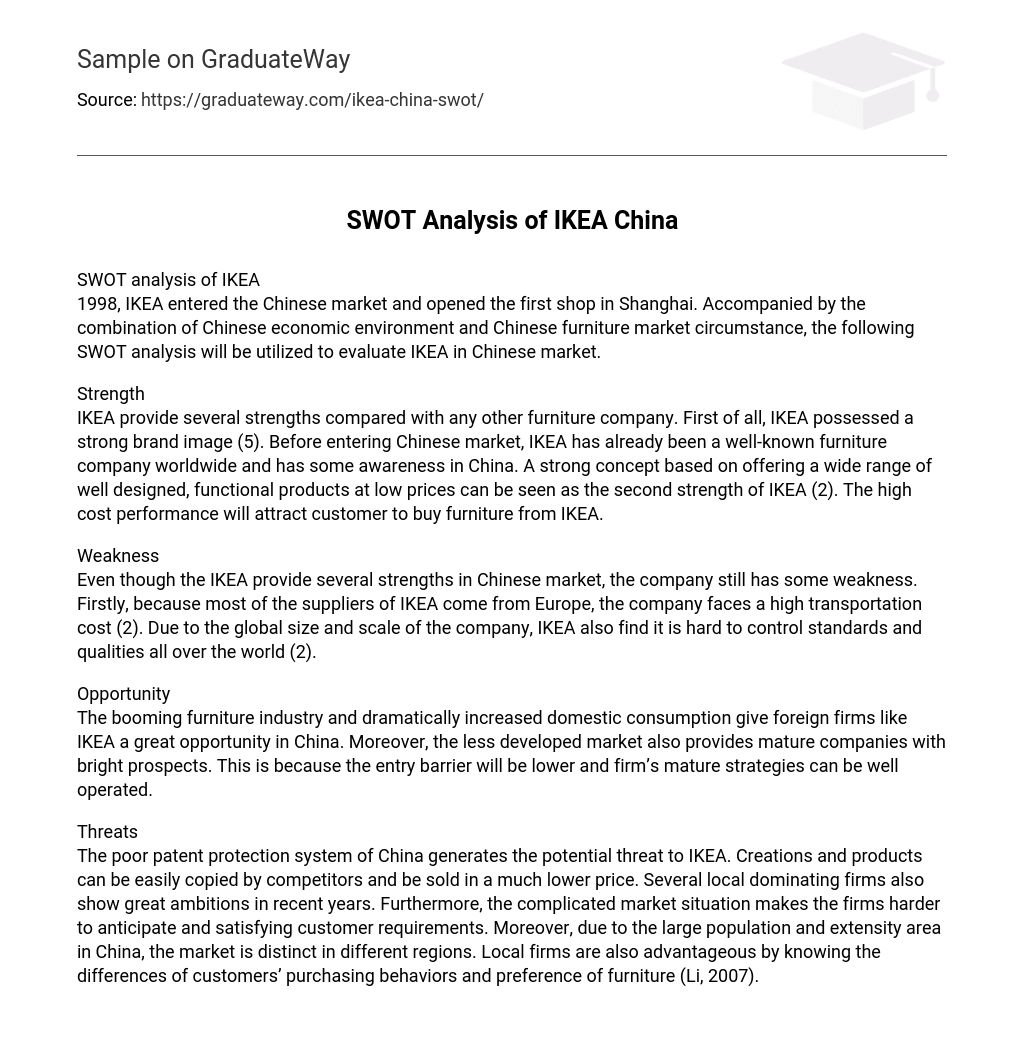SWOT analysis of IKEA
1998, IKEA entered the Chinese market and opened the first shop in Shanghai. Accompanied by the combination of Chinese economic environment and Chinese furniture market circumstance, the following SWOT analysis will be utilized to evaluate IKEA in Chinese market.
Strength
IKEA provide several strengths compared with any other furniture company. First of all, IKEA possessed a strong brand image (5). Before entering Chinese market, IKEA has already been a well-known furniture company worldwide and has some awareness in China. A strong concept based on offering a wide range of well designed, functional products at low prices can be seen as the second strength of IKEA (2). The high cost performance will attract customer to buy furniture from IKEA.
Weakness
Even though the IKEA provide several strengths in Chinese market, the company still has some weakness. Firstly, because most of the suppliers of IKEA come from Europe, the company faces a high transportation cost (2). Due to the global size and scale of the company, IKEA also find it is hard to control standards and qualities all over the world (2).
Opportunity
The booming furniture industry and dramatically increased domestic consumption give foreign firms like IKEA a great opportunity in China. Moreover, the less developed market also provides mature companies with bright prospects. This is because the entry barrier will be lower and firm’s mature strategies can be well operated.
Threats
The poor patent protection system of China generates the potential threat to IKEA. Creations and products can be easily copied by competitors and be sold in a much lower price. Several local dominating firms also show great ambitions in recent years. Furthermore, the complicated market situation makes the firms harder to anticipate and satisfying customer requirements. Moreover, due to the large population and extensity area in China, the market is distinct in different regions. Local firms are also advantageous by knowing the differences of customers’ purchasing behaviors and preference of furniture (Li, 2007).





